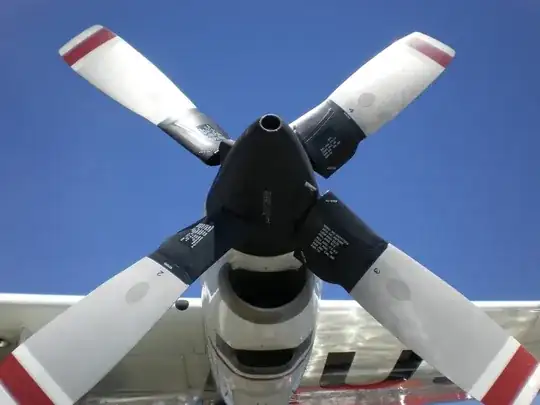I have a good understanding of how a propeller works. An engine turns the blades resulting an increase in velocity. But how do the blades accelerate air to result in thrust?
1 Answers
This is based on Wikipedia, Propeller Design, but as my comment suggested above, the basic idea is that of a vertical wing. As a historical note, the Wright brothers created their own (the very first?) wind tunnel to test their propeller designs, as there was very little data available and most of the measurements, estimates etc., that they obtained from other sources was completely wrong.
Propellers are similar in aerofoil section to a low-drag wing, therefore as with an aircraft wing, they are most efficient at their optimum angle of attack, and can become inefficient at other angles of attack . One method to overcome this limitation is to use a variable pitch mechanism, which allows the pilot to alter the blades' pitch angle as engine speed and aircraft velocity are changed. A possible danger with this mechanism is that, if it fails, the aircraft may suffer serious problems during flight.
A well-designed propeller typically has an efficiency of around 80% when operating in the best regime.The efficiency of the propeller is influenced by the angle of attack (α). This is defined as α = Φ - θ,[11] where θ is the helix angle (the angle between the resultant relative velocity and the blade rotation direction) and Φ is the blade pitch angle. Very small pitch and helix angles give a good performance against resistance but provide little thrust, while larger angles have the opposite effect. The best helix angle is when the blade is acting as a wing producing much more lift than drag. Angle of attack is similar to advance ratio, for propellers.
A further consideration is the number and the shape of the blades used. Increasing the aspect ratio of the blades reduces drag but the amount of thrust produced depends on blade area, so using high-aspect blades can result in an excessive propeller diameter. A further balance is that using a smaller number of blades reduces interference effects between the blades, but to have sufficient blade area to transmit the available power within a set diameter means a compromise is needed. Increasing the number of blades also decreases the amount of work each blade is required to perform, limiting the local Mach number - a significant performance limit on propellers.
